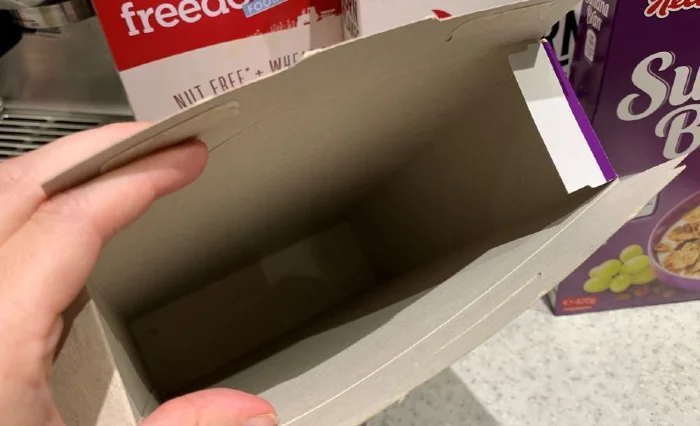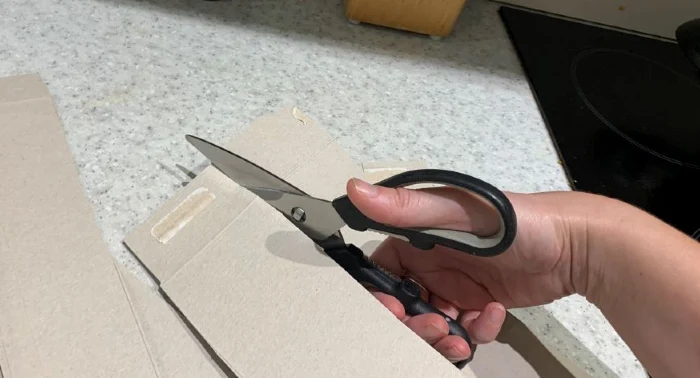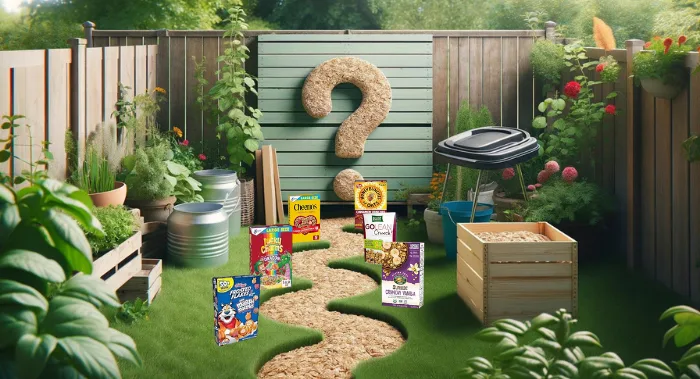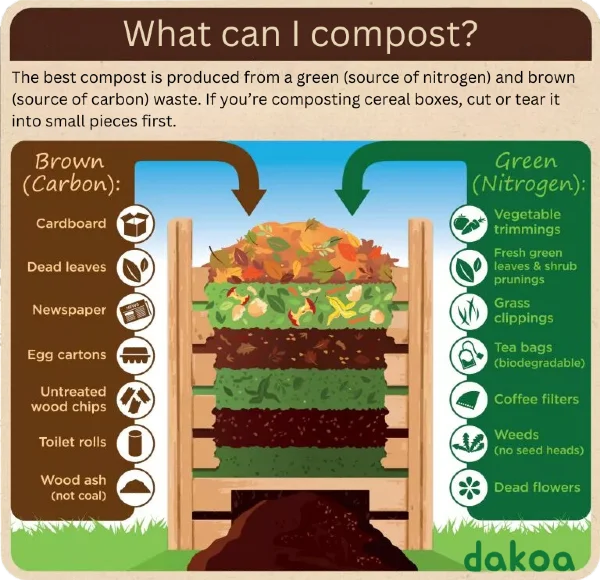Introduction to Composting Cereal Boxes
Ever wondered whether those cereal boxes should go into your compost bin or the recycling pile? You’re not alone. It’s a common question for those of us trying to live a bit greener. Composting seems like the eco-friendly option at first glance, but it’s not without its complications. Simply put, there isn’t a quick Yes or No on this question!
Cereal boxes come with a mix of inks, glues, and other materials that might not be great for your garden soil. So, let’s break down the facts about composting vs. recycling these boxes to help you make the best choice for your sustainable lifestyle.
Key Points:
- Composting cereal boxes might introduce unwanted chemicals to your compost due to inks and glues.
- Recycling offers a cleaner, alternative route for managing this waste sustainably.
- Understanding the pros and cons of each option is crucial for making informed, eco-friendly decisions.
Understanding The Compost Basics
Composting is like the superhero of sustainable gardening, turning everyday kitchen scraps and yard waste into nutrient-rich compost. It’s all about the balance between ‘greens’ and ‘browns’—where greens are your kitchen leftovers and fresh yard clippings, full of nutrients, and browns are things like cardboard and dry leaves, adding the necessary carbon structure.
But composting isn’t just about throwing everything into a pile and hoping for the best. To really make it work, you need to chop or tear those materials into smaller pieces to speed up decomposition.
Think of your compost bin or pile as a bustling city for microbes, where occasional turning lets oxygen flow, keeping the decomposition process active. By diving into composting, you’re not just reducing landfill waste; you’re actively enriching the earth and supporting a cycle of growth and sustainability.
It’s a simple step with profound impacts, making your garden thrive while doing good for the planet. And while it takes some time and effort, once you get composting down, you could even turn it into a fun side hustle.
The Complicated Composition of Cereal Boxes
Standing in front of the recycling bin, cereal box in hand, I’ve often wondered about its next journey. These boxes, the trusty keepers of our breakfast, seem like they’d be a great fit for the compost pile. After all, they’re mostly made of chipboard, a type of recycled paper, which sounds pretty eco-friendly, right? I liked the idea of them breaking down in my compost bin, returning to the earth.
But taking a closer look, I found some not-so-great details. The glues, binders, and epoxies that hold these boxes together might not be so garden-friendly. And the vibrant colors of the box? They could be hiding heavy metals in the ink, a real wake-up call. These kinds of contaminants could risk the health of the soil and, ultimately, the plants growing in it. So, I had to rethink. Maybe these boxes were better off recycled properly, keeping my garden safe from potential toxins.
This shift in thinking doesn’t just apply to cereal boxes. Many paper products, like paper napkins, paper plates, and even pizza boxes, come with similar concerns. While we’re eager to reduce waste and support our garden’s growth, it’s crucial to pick the right materials. For a thriving vegetable garden, understanding what goes into our compost is key. This doesn’t mean giving up on composting these materials altogether, but perhaps seeking out brands that use safer inks and glues or opting for other brown materials like shredded cardboard, dry leaves, or even corrugated cardboard, which often comes with fewer contaminants.
Pros of Composting Cereal Boxes
Initially, I was on the fence about adding cardboard to my compost. But, with a bit more research, I saw the light. Turns out, composting cereal boxes is a fantastic way to cut down on waste. By chopping them up into smaller pieces, they decompose nicely in the compost bin, mingling with kitchen scraps such as veggie peels and coffee grounds.
This practice not only diverts a hefty load of waste from the landfill but also transforms it into gold for the garden.
The real kicker, though, is the boost these materials give to the soil. Composting these cardboard pieces enriches the earth with vital nutrients. As someone who gardens, there’s nothing better than watching plants flourish in this enriched soil.
The mix of brown and green materials, from shredded cardboard to lawn clippings, creates a well-balanced decomposition that nurtures a lush, healthy garden. It’s a way to bypass synthetic fertilizers, which can sneak nasty chemicals into our creeks and rivers, and still see your garden thrive.
Cons of Composting Cereal Boxes
While there’s a lot to love about composting cereal boxes for their waste-reducing magic, we can’t overlook the cons. The truth is, the inks used on these boxes might contain heavy metals—a genuine concern for anyone wanting to keep their garden safe. Plus, the glues and binders that hold these boxes together could introduce unwanted chemicals into your compost.
As I’ve journeyed toward living more sustainably, it became clear that not all attempts to compost are created equal. The dream of turning all our kitchen leftovers and paper products into rich compost hits a snag when we consider that some items, like cereal boxes, come with their own set of issues. They come from natural sources, sure, but the process they go through adds stuff we might not want in our compost piles.
After giving it some thought, it seems recycling cereal boxes is the smarter move for keeping our gardens healthy. This decision fits right in with the bigger picture of looking after our planet, making sure we’re doing our best for our gardens and the environment.
How to Safely Compost Cereal Boxes

Realizing that not every recycling program takes cereal boxes—thanks to concerns over heavy metals and plastic coatings—I started seeing composting them as a savvy move. But there’s a right way to do it to avoid any composting pitfalls.

First up, I take the time to strip off any labels and plastic films. These bits don’t play well with compost, potentially adding harmful chemicals or just plain slowing down the composting process.
Then, I chop up the boxes into smaller pieces, or sometimes just tear them up into bits. This little step makes a huge difference, helping these cardboard pieces blend more seamlessly with the rest of the compost mix, speeding up their breakdown alongside kitchen leftovers and yard waste.
With this approach, adding cereal boxes to the compost bin isn’t just okay—it’s actually a smart way to boost the health of my compost pile, ultimately enriching my garden’s soil with all that compost goodness.
Alternatives to Composting
If you’re hesitant about adding cereal boxes to your compost, there’s no need to worry. There are plenty of other eco-smart ways to give those boxes a second life, avoiding the landfill without risking your compost’s health.
First up, recycling is the go-to for many of us. It’s easy, and most places will take your cereal boxes off your hands, turning them into new paper products. A simple step like flattening the boxes can make a big difference, helping you fit more into your recycling bin and making the recycling process a bit smoother.
Then, there’s the creative route. Cereal boxes have this great balance of being sturdy yet easy to cut and fold, making them perfect for DIY projects. Think about turning them into drawer dividers, bookmarks, or even some funky wall art. Local schools and community centers might love to have them for crafting sessions, turning what would’ve been waste into resources for creativity and learning.
And don’t forget about the gardening community. Whether it’s through permaculture forums or local gardening clubs, sharing ideas on how to repurpose cereal boxes can spark some truly innovative uses. From making biodegradable pots for seedlings to crafting labels for your garden beds, these boxes have plenty of potential to support your green thumb efforts in new and sustainable ways.
Considering Cereal Boxes for Compost: A Soil Safety Check
Gardeners often ponder the effects of tossing cereal boxes into their compost heaps. At a glance, these carbon-rich boxes seem like they’d be a boon, promising to keep the compost balanced and feed essential nutrients back to the earth. Yet, digging a bit deeper uncovers some concerns.
Cardboard, including the kind your cereal comes in, can be coated in inks, glues, and other additives that don’t exactly belong in a natural setting. These elements could seep into your compost, raising red flags about soil safety. As a result, it might be wise to reserve compost containing cereal box material for non-edible plants to sidestep any risk of contaminating your homegrown veggies with heavy metals or other nasties.
If you’re set on including cereal boxes in your compost mix, there’s a right way to do it. Shredding them into fine pieces and ensuring they’re well-integrated with both brown and green materials can improve the pile’s aeration and speed up decomposition. This careful approach can help mitigate some risks, making your compost healthier for your garden. But, if there’s ever any uncertainty, remember that recycling is a foolproof alternative that keeps your garden—and conscience—clear.
Grassroots Insights: Cereal Boxes in Compost
Within permaculture forums and gardening circles, the topic of composting cereal boxes often sparks lively discussions. Concerns about the potential risks—like heavy metals and adhesives lurking in the cardboard—have many gardeners on high alert. However, a fascinating shift has been happening. Some eco-enthusiasts, keen on minimizing waste, started incorporating shredded cereal boxes into their compost as a carbon-rich material. They argue that, in moderation, the waste-reducing and compost-boosting benefits can tip the scale in favor of composting.
These pioneers are careful, though. They strip away any plastic parts and make sure the cardboard bits are well integrated with green materials, such as kitchen leftovers and yard trimmings. This careful mixing ensures a healthy, aerated compost pile that breaks down efficiently.
A general agreement has formed around the idea that if you’re going to compost cereal boxes, it’s probably best to use the resulting compost for ornamental plants and flower beds, not the veggie patch. This cautious stance is all about preventing any chance of contaminants making their way into homegrown food.
Despite varying viewpoints, what shines through is a community deeply invested in sustainable living. Gardeners and permaculturists alike are navigating the complexities of eco-friendly practices, always with an eye toward safeguarding the health of their gardens and the earth. This collective journey demonstrates the importance of sharing experiences and wisdom, we’re all striving to make greener choices without compromising the well-being of our planet, and we could use a little help along the way!
To Include or Not Include Cereal Boxes
The decision to add cereal boxes to your compost pile isn’t one to take lightly. It’s tempting to think about converting all sorts of kitchen waste, cereal boxes included, into a rich compost for your garden. However, it’s important to pause and consider the potential negatives. Cereal boxes might seem like an excellent source of carbon for a compost bin that’s already bustling with grass clippings and coffee grounds, but concerns about the glues, inks, and possible heavy metals they contain can’t be ignored.
When you’re wrestling with this choice, the key is to look at the bigger picture of your compost’s health. Mixing small, shredded pieces of cardboard with green and brown materials can boost the composting process, true. But, if the cereal boxes are printed with inks or glued with substances that have heavy metals, you risk contaminating your compost—and, by extension, any food crops you plan to nourish with it.
Consider the virtues of alternative recycling methods, or perhaps sticking to more traditional composting ingredients that don’t pose a risk to your soil’s health. For those deeply invested in the green living movement, seeking out high-carbon materials that are safe and free from contaminants is crucial. Every decision, from what we recycle to what we compost, reflects our commitment to a healthier, more sustainable planet.
Action List: Composting Cereal Boxes
- Preparation for Composting
- Start by removing any plastic bags, liners, or coatings from the cereal boxes. This is crucial as plastic doesn’t decompose and can contaminate your compost.
- Shredding Cardboard
- Shred or tear cereal boxes and other types of cardboard, like cracker boxes and cardboard egg cartons, into small pieces. This facilitates a faster decomposition process, making it easier for microorganisms to break down the material.
- Balancing the Compost
- Achieve a balanced compost by mixing green materials, such as vegetable peelings, coffee grounds, and food waste, with brown materials, including shredded cardboard, brown paper, and dry leaves. This variety provides essential nutrients and helps maintain proper moisture levels.
- Considerations for Specific Types of Cardboard
- Evaluate the type of cardboard you’re adding. Flat cardboard and paper towel rolls are excellent, but be cautious with cardboard that may have a plastic coating or glossy finishes, as these can hinder the composting process.
- Utilizing the Lasagna Method
- For large compost piles, consider the lasagna composting method by layering green and brown materials. This includes layers of cardboard, organic waste, and other compostable materials to create a nutrient-rich environment.
- Monitoring Your Compost
- Keep an eye on the decomposition process. If you notice it’s taking a long time for cardboard to decompose, try adding more green materials to speed up the process or chopping any large pieces of cardboard into smaller pieces.
- Exploring Alternative Uses
- If you’re concerned about potential risks or the quality of your compost, consider using recycled cardboard in other ways, such as in permaculture forums’ growies or as a base for garden paths where it can suppress weeds and eventually break down.
Frequently Asked Questions: Composting Cereal Boxes
Is it a good idea to cut cereal boxes into small pieces for composting?
Absolutely! Cutting cardboard boxes into small pieces accelerates their breakdown, making them a great addition to your compost pile alongside organic matter like food scraps, tea bags, and coffee filters.
What should be the first thing I do when composting cardboard like cereal boxes? The first step is to ensure any plastic wrapping or plastic coating is removed from the cardboard. This makes the cardboard, including flat cardboard and cardboard sheets from cereal boxes, more suitable for composting.
Can I add other types of paper products, like junk mail or paper towel rolls, to my compost?
Yes, adding paper products such as junk mail, paper towel rolls, and even white paper in small amounts can benefit your compost by providing carbon-rich organic material. However, be wary of glossy paper and ensure there’s no plastic wrap attached.
What’s a better option for composting: cereal boxes or toilet paper rolls?
Both can be considered good options for composting, as they contribute to the balance of brown materials. The best way to use them is by shredding or tearing them into smaller pieces to enhance the decomposition process.
How does the lasagna method apply to composting cardboard?
The lasagna method involves layering brown and green materials, similar to how you might layer a lasagna. You can alternate layers of cardboard waste, like cereal boxes or toilet paper rolls, with kitchen waste and other green materials to create a rich, balanced compost pile.
What about composting dairy products or using compostable packaging materials?
While dairy products are not recommended for compost due to odor and pest attraction, compostable packaging materials can be a great addition to your compost. Ensure they are certified compostable to avoid introducing plastics to your compost bin.
Can composting cardboard boxes, like those from cereals, pose a health concern?
While cardboard boxes can be composted, be mindful of the potential risk of heavy metals or chemicals from inks and glues. Choosing boxes with eco-friendly inks and minimal adhesives can mitigate health concerns.
Embracing a Sustainable Future: Beyond Composting Cereal Boxes
After diving deep into the ins and outs of composting cereal boxes, it’s become clear that sustainable living isn’t just about what we toss into our compost bins. It’s about adopting a broader, more comprehensive approach to waste management. To truly make a difference, we need to extend our vision beyond the compost heap and embrace the full spectrum of sustainable practices.
First and foremost, reducing waste takes precedence. This means making deliberate choices to lessen our waste footprint, like opting for products with minimal or no packaging. A great starting point is supporting brands committed to using compostable or recyclable packaging. By prioritizing these options, we can drastically decrease the amount of waste we contribute to landfills and trash cans.
Then comes the art of reuse. Repurposing items like cardboard from cereal boxes into something new—be it for crafts, storage solutions, or garden projects—not only cuts down on waste but also reduces the need for new resources. This creative reuse takes some pressure off our recycling systems and embodies the spirit of sustainability.
Recycling, though last in the reduce-reuse-recycle trio, plays a pivotal role. It gives a second life to materials like paper, glass, and certain plastics, turning what would be waste into valuable resources once more. Familiarizing ourselves with the recycling process, including knowing which materials are best recycled and which might be compost-safe, is key. Expanding regional education on these topics can boost recycling effectiveness and community engagement.
As we conclude our exploration of whether cereal boxes are better suited for the compost bin or the recycling bin, let’s not forget that sustainable living is about more than individual actions. It’s about embracing a holistic approach that includes reducing, reusing, and recycling in our daily lives. By adopting these practices, we’re not just making a statement about our values; we’re actively participating in securing a healthier planet for generations to come.
Our journey towards sustainability is ongoing, but every step we take is a step towards a more sustainable world.




















